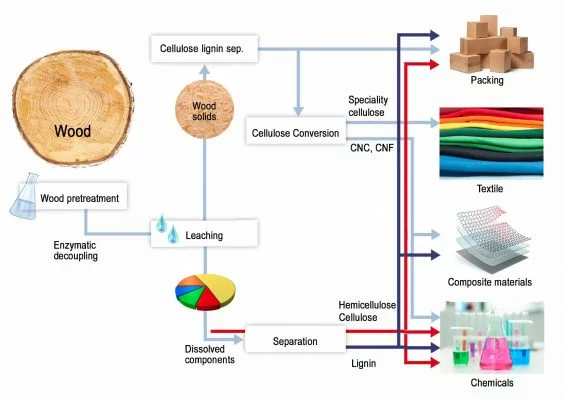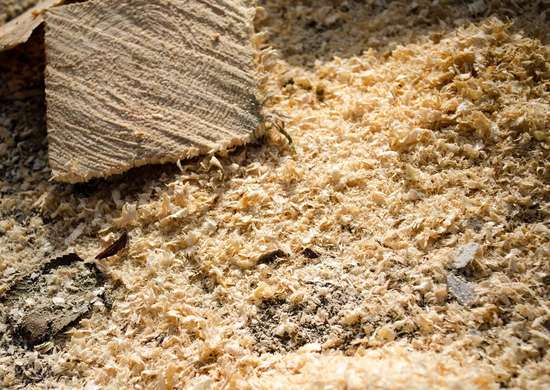Cellulose waste can be obtained from different sources or processes of wood transformation. Wood has been subjected to transformation techniques to create construction materials. It is always used to have the desired piece, whether a board, timber, lumber, or any structural engineering wood. During the transformation of wood, waste such as sawdust is generated. These are used to create the MDF boards. But what would happen if this byproduct were used to develop a material with different uses? Knowing that wood composition is typically 25% lignin and 70% cellulosic carbohydrates, with roughly 45% cellulose and 25% hemicelluloses. All of them are polymeric elements. Lignin and hemicellulose act as a matrix or binder for cellulose.

Paper is composed of wood pulp transformed with mechanical and chemical processes to destroy the matrix with lignin and obtain the cellulose fibers. However, sawdust hasn’t been processed to eliminate the matrix. What if we used it with other byproduct waste to create something? MDF boards are an example of a product or material made with “waste,” but they must use a synthetic resin to bond the wood fibers together.
Finding a suitable natural resin or byproduct that could act as a resin to bind together the fibers would be an exciting step to achieve. This will be an ideal experiment to create more alternatives to conventional materials. Society has already developed processes to bind fibers, so new technology wouldn’t be necessary to produce it. After all these stages, it will be time to build a lamp, a chair, a desk, a cabinet, a decorative object, a textile, or something else.




